Pippa Andrews’ path to becoming a textile artist was not straight-forward. But discouragement from others, a lack of support from school and a humiliating experience in a sewing class, didn’t stop her eventually pursuing her passion. She’s now an active member of the Material Space Group having received a BA. Hons in Fashion and Textiles from Bath Spa University.
We were introduced to Pippa’s work at the Knitting and Stitching show and were immediately struck by its impact: detailed, diverse and engaging. In part one of our interview with her, we learn more about her journey as well as what inspires her work.
The sanctuary of the art room
TextileArtist.org: What initially captured your imagination about textile art?
Pippa Andrews: In my early twenties I saw modern embroidery for the first time. I was good friends with a colleague and his wife, Jeanne Turner, who was a brilliant embroiderer. She had done City and Guilds Embroidery and was starting to exhibit. It really opened my eyes to what could be achieved with stitch, though at the time I never imagined that I would ever do it myself.
What or who were your early influences and how has your life/upbringing influenced your work?
My mother’s family were Russian Jews who were all involved in the rag trade in some form. Several great aunts were milliners, and my grandfather had dress shops in Liverpool, one of which my mother ran when I was a small child. So I was aware of the bolts of fabric in the storeroom and the lady doing alterations for the customers on her treadle sewing machine. Later, the shop was sold but the sewing machine stayed in the family for many years. Knitting was big in my mother’s life – I hardly ever saw her sitting down without knitting needles in her hands, while my granny was a great crocheter.
As for me, though, I was hopeless at knitting – dropped stitches all the time and painfully slow. I remember at infant school we were supposed to learn to knit and make dishcloths as presents for our mums for Xmas (how thrilling was that). It took me so long that my teacher took over and finished it for me.
At primary school I remember I enjoyed making a felt applique cushion, but it was soon stolen out of our car (used, no doubt, to wrap the stolen radio in). Once at secondary school I really began to hate sewing. In the first year we had to make a gingham apron decorated with cross stitch to our own design. My design was so dense with stitches that it took me the whole year. The following year we had to make a dress and model it at the end of the year – the timing was not good for my burgeoning boobs and I also had a difficult relationship with my sewing teacher who publicly tore out my crooked machined seams in front of the class. I felt so humiliated that I never had the urge to sew again. My focus at school was on spending as much time as I could in the art room – I just loved drawing and painting.
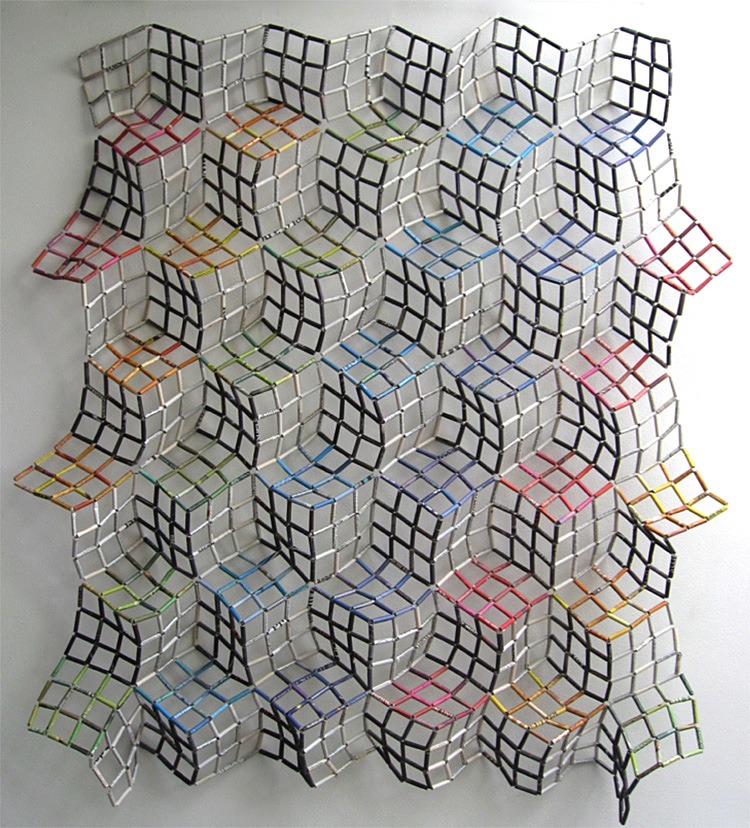
Fighting resistance
What was your route to becoming an artist? (Formal training or another pathway?)
There was much resistance to me doing art as a career at my academic school, and my parents also encouraged me to keep it just as a hobby. Being ridiculously obedient at the time, I didn’t insist and did a Bachelor of Education degree with art and English as my main subjects. By that time it was the late sixties and crochet shawls were fashionable, so I was one of the rather rude girls who sat crocheting when in our mass lectures on psychology, philosophy and sociology. Following that, I didn’t teach but became a newspaper reporter, but for my whole life I fed my art appetite by attending some kind of art or craft part time course. These included painting, printmaking, stone carving, ceramics, woodwork and weaving. Eventually I started a City and Guilds Embroidery course and knew at once that this was my preferred medium. Once I had completed the most advanced City and Guilds Embroidery available with a wonderful teacher, Chris Cook, I was accepted at East Berks College, Windsor, for the three-year part time Diploma in Stitched Textiles that was run by Jan Beaney, Jean Littlejohn and Louise Baldwin. This was such an exciting time – they were marvellous and generous teachers and really expanded my vision. When the Diploma ended I was still hungry for more so I was able to take the credits I’d gained at Windsor and enter the third year of Bath Spa’s BA for Textiles ad Fashion. Here, Professors John Miles and Kerry Curtis ran a wonderful department where I could really develop my own ideas with masses of encouragement and support. While there, I was able to visit Japan on a textile study tour, which opened my eyes to the Japanese aesthetic which has had a huge influence on the work I make.
Whichever technique fits
What is your chosen medium and what are your techniques?
It’s textile art in its loosest sense. At the moment I’m working a lot with paper using beadweaving techniques, but I also enjoy using basketmaking methods. I usually get an idea in my head of what I want to achieve, and, because I have studied various crafts for a long time I have quite a lot of different techniques that I can do, whichever is right for the work I envisage. I sometimes mix techniques, for example, making vessels using coiled pine needles combined with needlefelted sections. I also make needlefelted brooches, which are coming from a totally different part of my brain from the “art” but I like to vary my days!
Focused on the aesthetic
Tell us a bit about your process and what environment you like to work in?
For the last eighteen months or so I have been making both wall pieces and three dimensional forms using a beading techniques called right angle weave. It has astonished me how many paths I can take this process along. All the current body of work, the ‘Standard’ series, is made from used copies of the London Evening Standard made into beads and joined with nylon fishing line. I have been interested in using beadweaving for ‘art’ as opposed to jewelry for several years. This began with a lightbulb moment when making a Dutch spiral chain necklace when I realized that the size could be changed to something much bigger and I starting making columns and other 3D forms from all types and sizes of tube – both man made, e.g. shower tubing and natural, eg. hollow dried stems of flowers such as cow parsley. My current work is more restricted in that it is all made from hand rolled strips of newspaper rolled into small tubes. When I made the first one I took tubes at random to weave and I was really struck by the subtle, chalky nature of the ink colours from the adverts and photos. So then I started separating them into pots of different colours and designing the colour placements for each piece. I like to recycle whenever I can, but it is the aesthetic that is the main reason why I use recycled newspaper (and other recycled items in other work).
My processes are usually slow and repetitive so usually I like to listen to the radio – invariably Radio 4. I have a little workroom at home, but it is so crammed with stuff that I think I might need one day that I often grab what I want and go and work somewhere else in the house. I am used to my own company but sometimes I feel a bit isolated. My ideal would be a studio with other artists as long as it is warm and open plan and I can see what everyone else is doing and get inspired and excited.
Read part two of our interview with Pippa: Japan and old bedsheets
For more info please visit:
www.pippaandrews.com
www.materialspace.com
Let us know if you’ve enjoyed this interview by leaving a comment below.
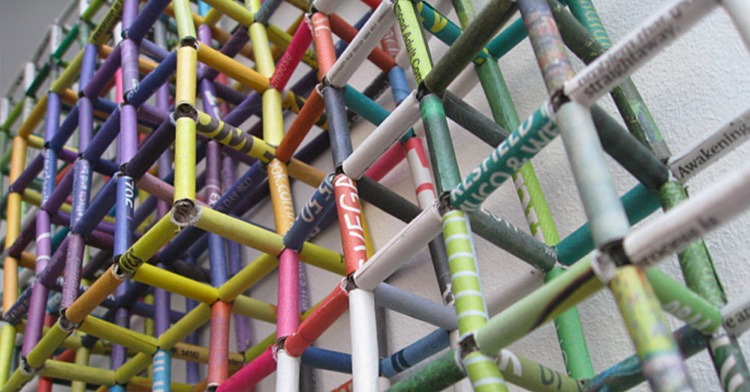

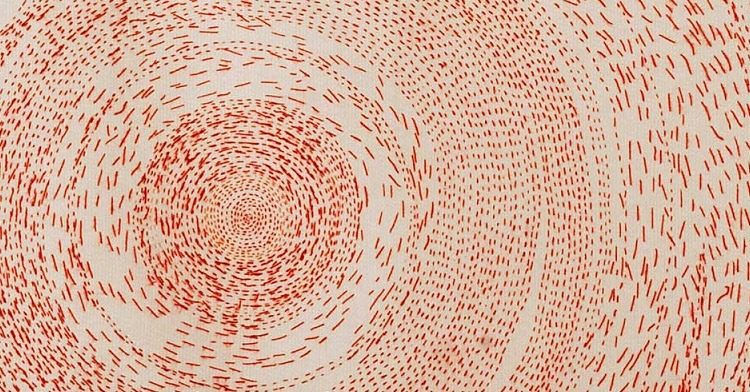
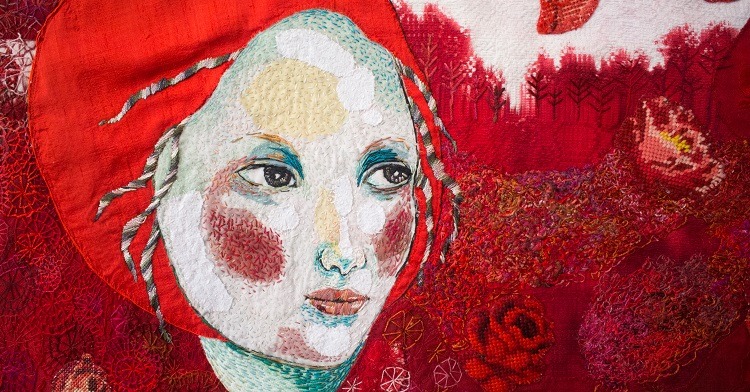
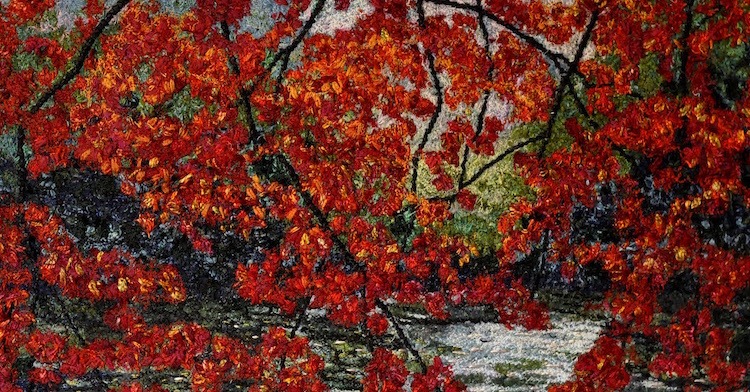
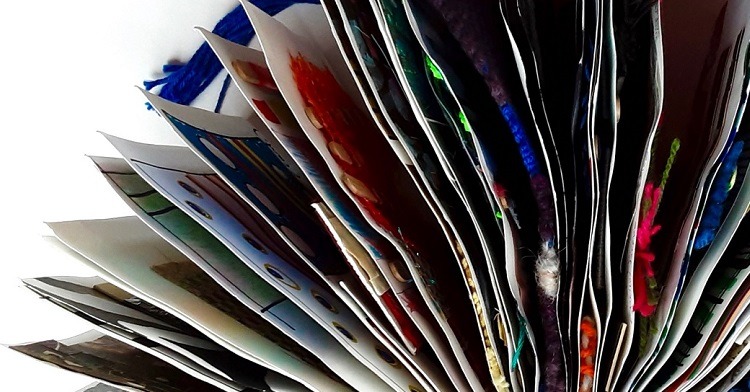
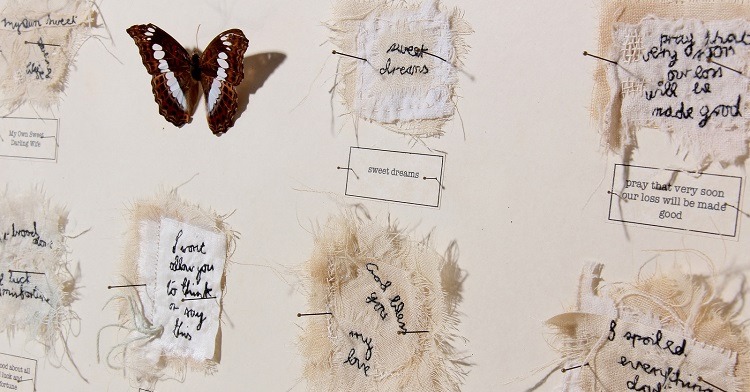
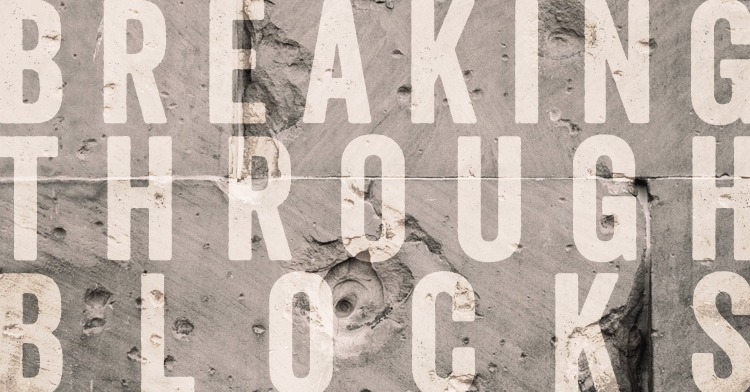
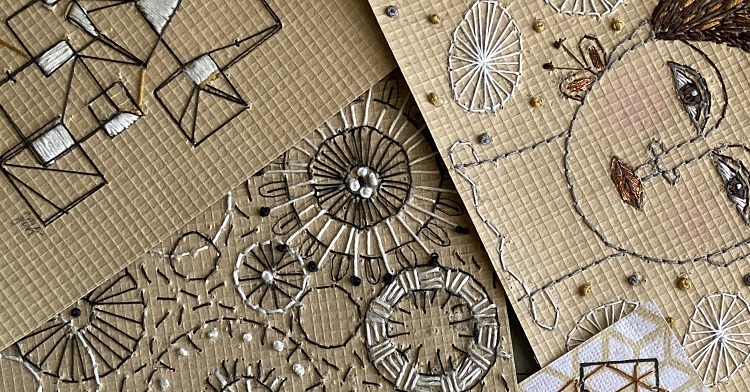
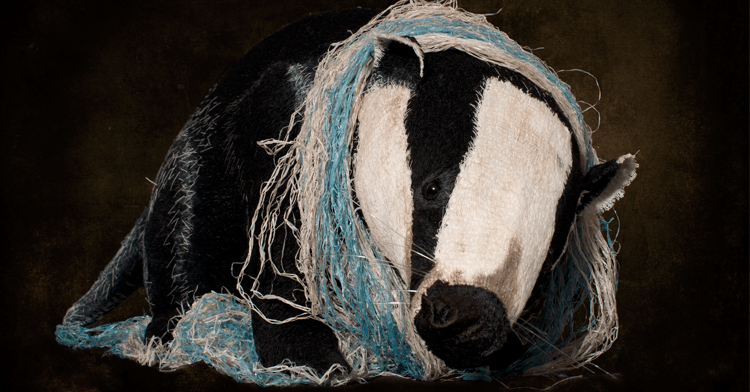
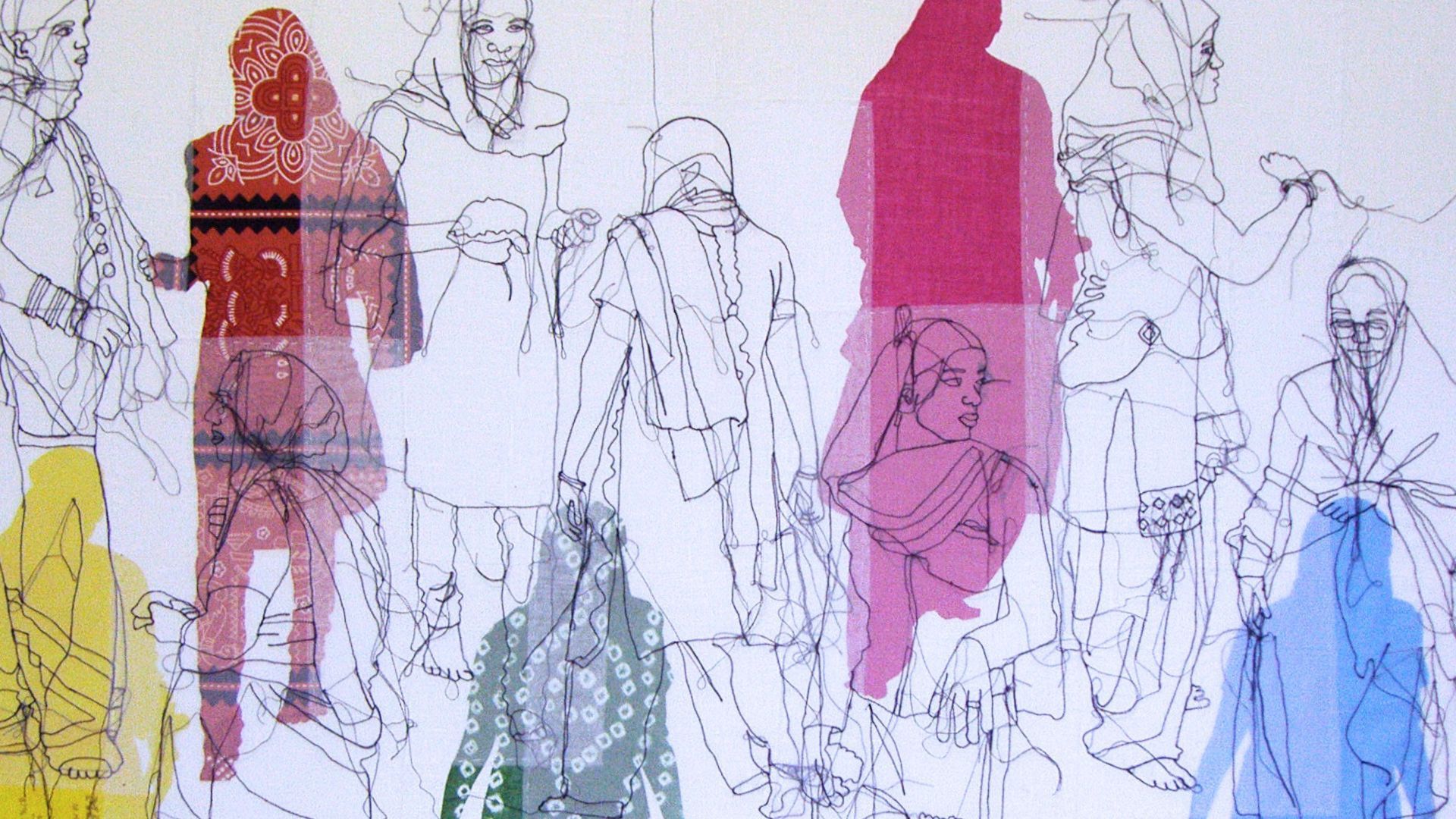
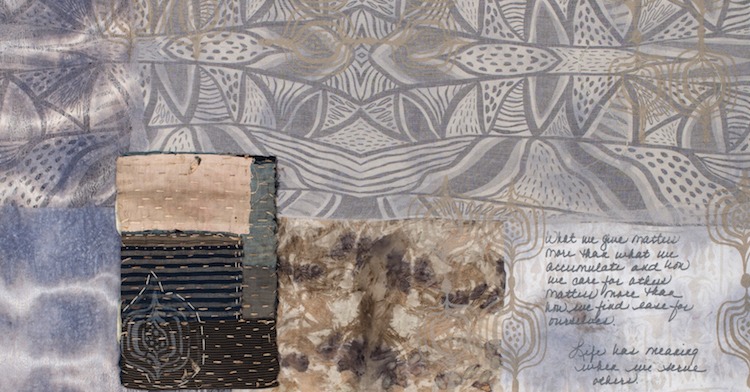
Comments